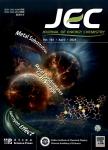版权所有:内蒙古大学图书馆 技术提供:维普资讯• 智图
内蒙古自治区呼和浩特市赛罕区大学西街235号 邮编: 010021

作者机构:School of Material Science and EngineeringLanzhou University of Technology State Key Laboratory of Advanced Processing and Recycling of Non-ferrous MetalsLanzhou University of Technology
出 版 物:《Journal of Energy Chemistry》 (能源化学(英文版))
年 卷 期:2016年第25卷第4期
页 面:587-593页
核心收录:
学科分类:080801[工学-电机与电器] 0808[工学-电气工程] 08[工学] 0805[工学-材料科学与工程(可授工学、理学学位)] 080502[工学-材料学]
基 金:supported by the National Natural Science Foundation of China(51203071,51363014 and 51362018) China Postdoctoral Science Foundation(2014M552509) the Opening Project of State Key Laboratory of Polymer Materials Engineering(Sichuan University)(sklpme2014-4-25) the Program for Hongliu Distinguished Young Scholars in Lanzhou University of Technology(J201402) the University Scientific Research Project of Gansu Province(2014B-025)
主 题:Supercapacitor Electrospinning Nanofiber Phase separation
摘 要:Microporous carbon nanofibers (MCNFs) derived from polyacrylonitrile nanofibers were fabricated via electrospinning technology and phase separation in the presence of polyvinylpyrrolidone (PVP). PVP together with a mixed solvent of N, N-Dimethylformamide and dimethyl sulfoxide was used as pore forming agent. The influences of PVP content in casting solution on the structure and electrochemical performance of the MCNFs were also investigated. The highest capacitance of 200 F/g was obtained on a three-electrode system at a scan rate of 0.5 A/g. The good performance was owing to the high specific surface area and the large amount of micro-pores, which enhanced the absorption and the transportation efficiency of electrolyte ion during charge/discharge process. This research indicated that the combination of electrospinning and phase separation technology could be used to fabricate microporous carbon nanofibers as electrode materials for supercapacitors with high specific surface area and outstanding electrochemical performance. (C) 2016 Science Press and Dalian Institute of Chemical Physics, Chinese Academy of Sciences. Published by Elsevier B.V. and Science Press. All rights reserved.